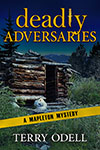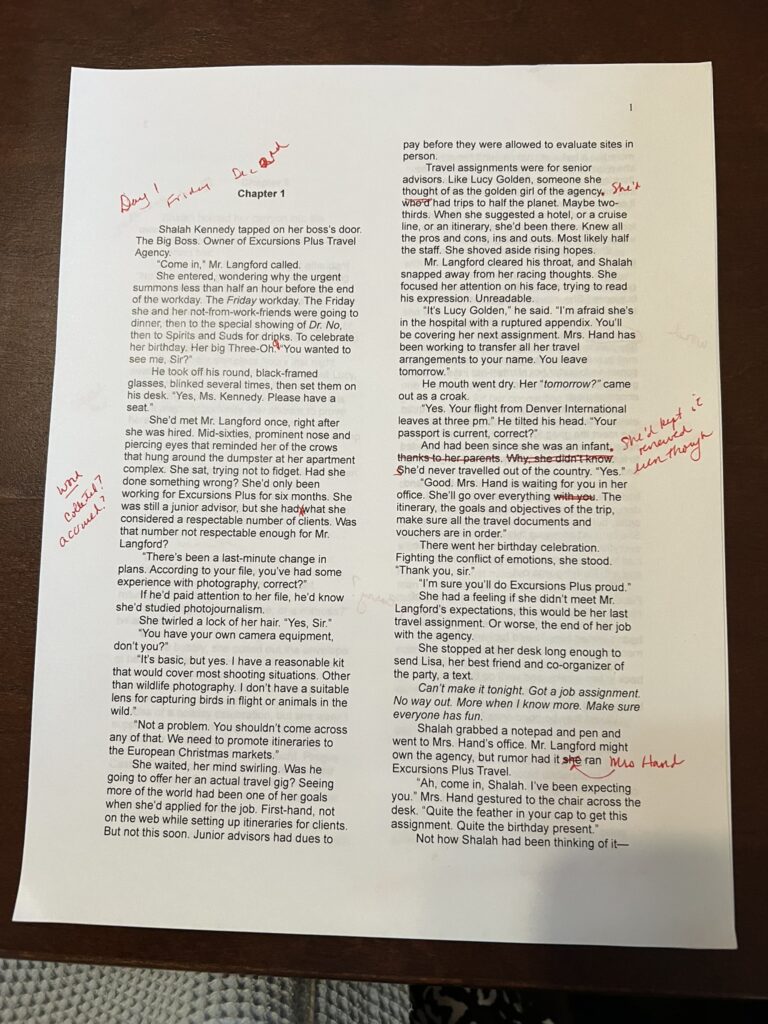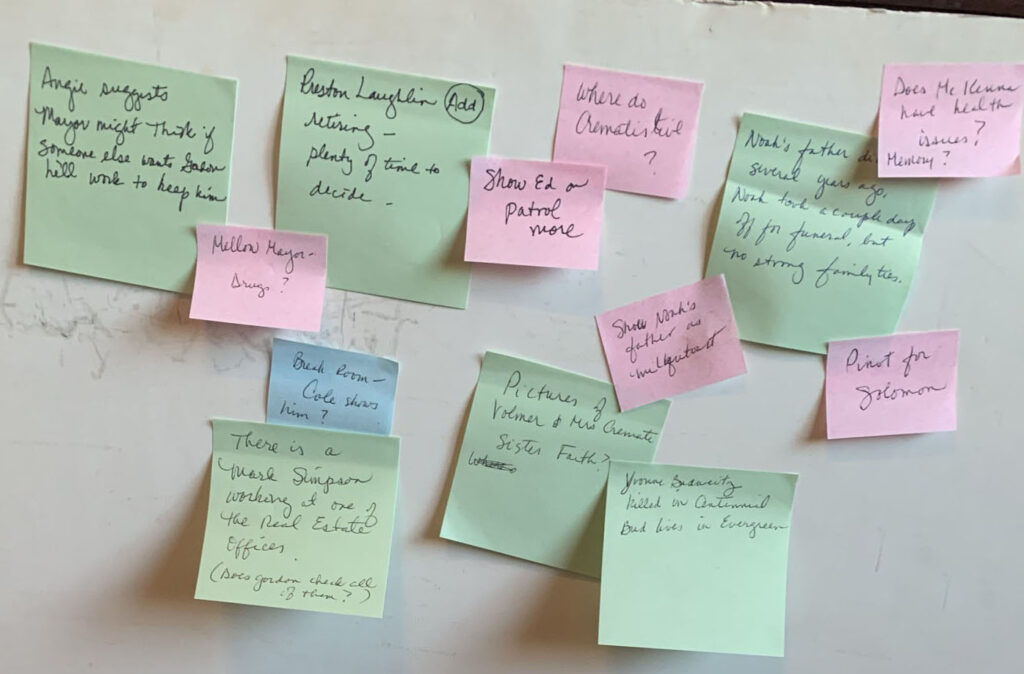Why I Suck at Marketing
Terry Odell
 Being an old dog and, as an indie author, being responsible for every aspect of my book publication processes, it’s hard to remember that just because I don’t like something doesn’t mean nobody else does. I’m not talking about the writing. Everyone finds the system that works for them. Plotter, Pantser, or Plantser? Nitty gritty or beautiful words? How much violence? Profanity? Look at any best-selling book’s reviews on Amazon. There will be one and two star ratings along with the fours and fives, so you’ll never please everyone.
Being an old dog and, as an indie author, being responsible for every aspect of my book publication processes, it’s hard to remember that just because I don’t like something doesn’t mean nobody else does. I’m not talking about the writing. Everyone finds the system that works for them. Plotter, Pantser, or Plantser? Nitty gritty or beautiful words? How much violence? Profanity? Look at any best-selling book’s reviews on Amazon. There will be one and two star ratings along with the fours and fives, so you’ll never please everyone.
No, I’m talking about the other side of the job. The part I dread.
Marketing. Promotion. Getting the book from “uploaded” to “being bought.”
There are so many aspects of marketing, and I haven’t found any I like.
But just because I don’t like them doesn’t mean I shouldn’t at least give some of them a try. Debbie covered some of this in her post yesterday.
I know authors who promote a new release with Facebook “parties.” Or blog tours, some of which they spend bucks on to have a professional set them up.
What I see is people who follow these tours are looking for a chance to win whatever giveaways the author is enticing people with. Most of them aren’t buying the book. But maybe the authors are looking at this as more of a way to connect with readers, which might lead to future sales.
What about posting things on social media? I’ve said it before, and my opinion/advice hasn’t changed. Social media should be at least 80% SOCIAL. Seeing countless variations on “buy my book” doesn’t work for me as a consumer, so I don’t do it as an author.
I’ve never bought a book based on a book trailer. I might have looked at the book after a trailer, but that’s rare. Yet, just because I don’t think book trailers are of much value, some people do. And, because it was very easy to do with Canva, I went ahead and made a trailer for Double Intrigue.
Again, because it was easy, and more fun than a lot of other marketing chores I avoid, I created some graphics as well. Do they send people to my book pages? I don’t know. But they seem a slightly more subtle way to draw attention to my book. (Clicking will enlarge images)
Don’t get me started on ads. When I’m shopping for a book, I usually have a good idea what I’m looking for, and go straight there. I’ve been told that Amazon puts ads on book pages, but to be honest, I don’t think I’ve ever noticed them. Of course, that’s because 97.63% of my book purchases are at Barnes & Noble, not Amazon. Almost all of my Amazon “buys” are the monthly free books because I have a Prime account. B&N probably has ads, too, but there again, I’m there for the book I want.
I haven’t done Amazon ads.
The big reason? Because Amazon ads require all sorts of conniving to reach an audience. You have to bid for placement, target an audience, set budgets, do AB testing … my old brain hurts, and I wonder how much money you have to put out there before you see a return. I was at a workshop once, and the presenter said she had no issues with forking over $200/day just to test her ads. Not me. And having to take courses to learn how to run ads … not my thing. I’d rather spend that time writing. After all, writing the next book is the best marketing ploy.
Now, I have run ads (not talking about Featured Deals) at Bookbub because they’re very easy to set up. Are they as effective as if I’d spent the time learning how to use Amazon and Facebook ads? I don’t know. Can’t compare what I haven’t tried.
A takeaway here is that you shouldn’t be acting based on only your preferences. You’re not your audience. You’re not your peers.
Another aspect of marketing I learned the hard way. Covers. They’re part of your book’s image. Part of your brand. They need to let readers know at a glance what kind of a book they’re being asked to buy. That’s why publishing houses have art and marketing departments, and they’re separate from the editing side. Deb went into covers in great depth last week, and I shared a post I did about covers there as well.
What about you, TKZers? Do you enjoy the marketing side of publishing? And yes, even traditionally published authors, unless they’re the BIG NAMES, have to do some of their own marketing.
New! Find me at Substack with Writings and Wanderings
When your dream assignment turns into more than you bargained for …
 Shalah Kennedy has dreams of becoming a senior travel advisor—one who actually gets to travel. Her big break comes when the agency’s “Golden Girl” is hospitalized and Shalah is sent on a Danube River cruise in her place. She’s the only advisor in the agency with a knowledge of photography, and she’s determined to get stunning images for the agency’s website.
Shalah Kennedy has dreams of becoming a senior travel advisor—one who actually gets to travel. Her big break comes when the agency’s “Golden Girl” is hospitalized and Shalah is sent on a Danube River cruise in her place. She’s the only advisor in the agency with a knowledge of photography, and she’s determined to get stunning images for the agency’s website.
Aleksy Jakes wants out. He’s been working for an unscrupulous taskmaster in Prague, and he’s had enough. When he spots one of his coworkers in a Prague hotel restaurant, he’s shocked to discover she’s not who he thought she was.
As Shalah and Aleksy cruise along the Danube, the simple excursion soon becomes an adventure neither of them imagined.
 Like bang for your buck? I have a new Mapleton Bundle. Books 4, 5, and 6 for one low price.
Like bang for your buck? I have a new Mapleton Bundle. Books 4, 5, and 6 for one low price.
 Terry Odell is an award-winning author of Mystery and Romantic Suspense, although she prefers to think of them all as “Mysteries with Relationships.”
Terry Odell is an award-winning author of Mystery and Romantic Suspense, although she prefers to think of them all as “Mysteries with Relationships.”






 The American Library Association, ALA, documented 4,240 unique book titles targeted for censorship in 2023—a 65% surge over 2022 numbers—as well as 1,247 demands to censor library books, materials, and resources. Pressure groups focused on public libraries in addition to targeting school libraries. The number of titles targeted for censorship at public libraries increased by 92% over the previous year, accounting for about 46% of all book challenges in 2023.
The American Library Association, ALA, documented 4,240 unique book titles targeted for censorship in 2023—a 65% surge over 2022 numbers—as well as 1,247 demands to censor library books, materials, and resources. Pressure groups focused on public libraries in addition to targeting school libraries. The number of titles targeted for censorship at public libraries increased by 92% over the previous year, accounting for about 46% of all book challenges in 2023. According to PEN America:
According to PEN America: If I may be so bold, I have a new release dropping on October 3rd, and I don’t think anyone will find cause to challenge or ban it. It’s available for preorder now.
If I may be so bold, I have a new release dropping on October 3rd, and I don’t think anyone will find cause to challenge or ban it. It’s available for preorder now. 
 Significant events can be individual, familial, national, or international.
Significant events can be individual, familial, national, or international.
 There are other major historic milestones. Another for me was the assassination of JFK. I was in high school history class, which was being taught by a ‘student teacher.’ I don’t know what they’re called in other regions, but this was part of the required curriculum for anyone wanting a teaching certificate in Los Angeles, and it was late enough in the semester that the teacher himself felt he could leave the room and leave her in charge. I don’t remember their names, but I remember he came into the room and interrupted the lesson and announced the assassination. Everyone’s first reaction was that he was playing up the curse that presidents elected in years with zeroes would come to a bad end. Then we noticed he was crying, and the shock hit us. School was dismissed for the day.
There are other major historic milestones. Another for me was the assassination of JFK. I was in high school history class, which was being taught by a ‘student teacher.’ I don’t know what they’re called in other regions, but this was part of the required curriculum for anyone wanting a teaching certificate in Los Angeles, and it was late enough in the semester that the teacher himself felt he could leave the room and leave her in charge. I don’t remember their names, but I remember he came into the room and interrupted the lesson and announced the assassination. Everyone’s first reaction was that he was playing up the curse that presidents elected in years with zeroes would come to a bad end. Then we noticed he was crying, and the shock hit us. School was dismissed for the day.
 Recently, James Scott Bell
Recently, James Scott Bell 













 (Oh, and if I can take a moment for some BSP. Double Intrigue my international romantic suspense set against the Danube river cruise I took last December is now
(Oh, and if I can take a moment for some BSP. Double Intrigue my international romantic suspense set against the Danube river cruise I took last December is now











 I recently read—okay, started—a book that I set aside after three chapters. I’d received the book at Left Coast Crime, when one of the publishers hosted an “open house” for its authors in attendance and they had stacks of their books to sign and give away. I accepted almost all of them. It would have been rude to tell them you weren’t interested, especially since the books were free. I have giveaways via my newsletter, and I figured the books would be put to good use, either before or after I read them.
I recently read—okay, started—a book that I set aside after three chapters. I’d received the book at Left Coast Crime, when one of the publishers hosted an “open house” for its authors in attendance and they had stacks of their books to sign and give away. I accepted almost all of them. It would have been rude to tell them you weren’t interested, especially since the books were free. I have giveaways via my newsletter, and I figured the books would be put to good use, either before or after I read them. Greetings, TKZers. I’m back from a wonderful, exhausting 4 days at Killer Con. The getting there and back, not so wonderful, but that’s becoming my norm for any travel requiring an airplane. “If you have time to spare, go by air.”
Greetings, TKZers. I’m back from a wonderful, exhausting 4 days at Killer Con. The getting there and back, not so wonderful, but that’s becoming my norm for any travel requiring an airplane. “If you have time to spare, go by air.” I had hands-on practice in fingerprinting. Coming from a dry climate and spending lots of hours tapping a keyboard, mine were very hard to collect. We got to do presumptive testing for blood (using synthetic blood). Watched a demonstration (up close) of using Blue Star (cheaper and easier to use than Luminol, preferred by the techs here).
I had hands-on practice in fingerprinting. Coming from a dry climate and spending lots of hours tapping a keyboard, mine were very hard to collect. We got to do presumptive testing for blood (using synthetic blood). Watched a demonstration (up close) of using Blue Star (cheaper and easier to use than Luminol, preferred by the techs here). The next morning, we arrived at NWTI and were led to a large lecture hall where they’d staged a shooting scene for us. We watched as the people who would be dealing with the scene came in —patrol officers, EMS, detectives, CSI, and the ME, and they all performed their respective duties.
The next morning, we arrived at NWTI and were led to a large lecture hall where they’d staged a shooting scene for us. We watched as the people who would be dealing with the scene came in —patrol officers, EMS, detectives, CSI, and the ME, and they all performed their respective duties.
 After she finished, we were teamed up in groups of 4 and we walked through a crime scene taking LOTS of pictures. Our objective wasn’t to solve the crime, but rather to prioritize 5 questions we would want answered, and to compare what we saw with the survivor’s narrative of what happened.
After she finished, we were teamed up in groups of 4 and we walked through a crime scene taking LOTS of pictures. Our objective wasn’t to solve the crime, but rather to prioritize 5 questions we would want answered, and to compare what we saw with the survivor’s narrative of what happened.